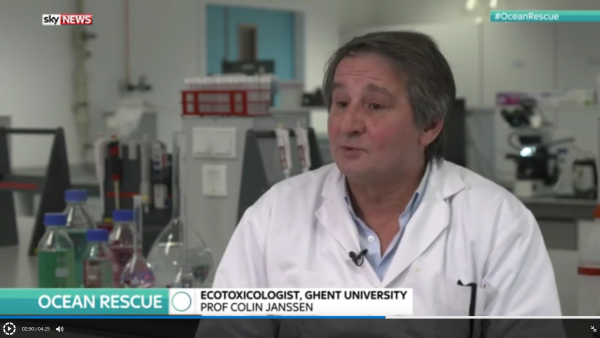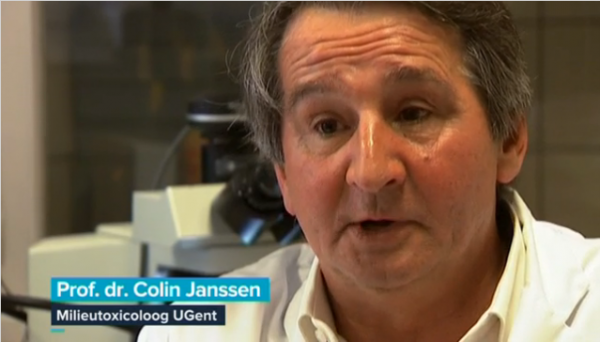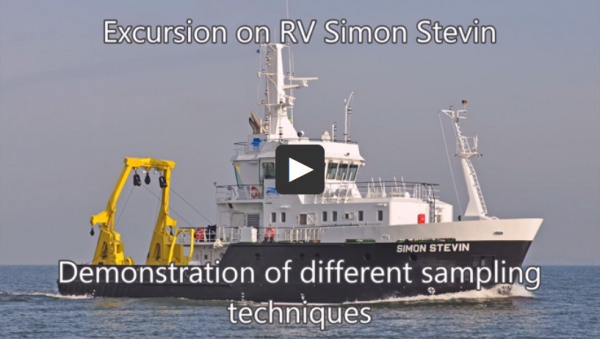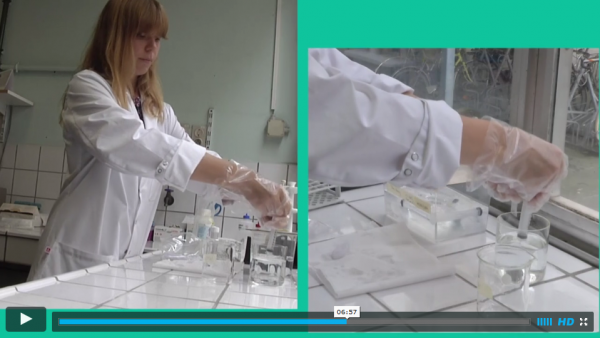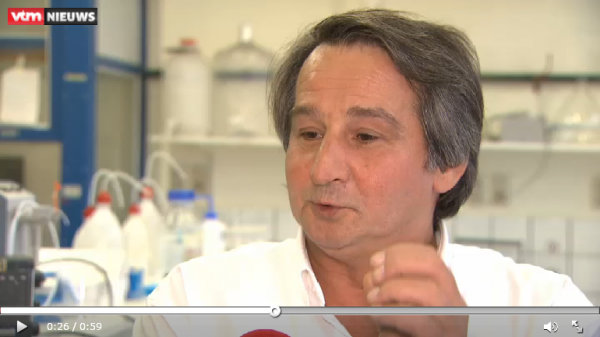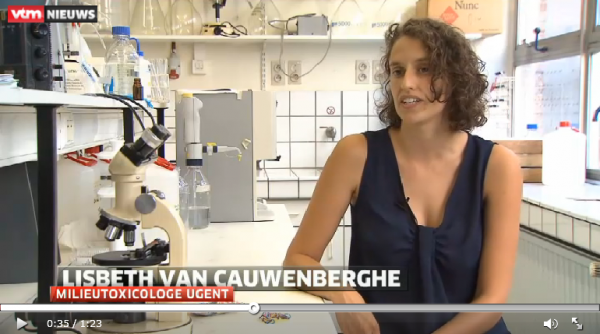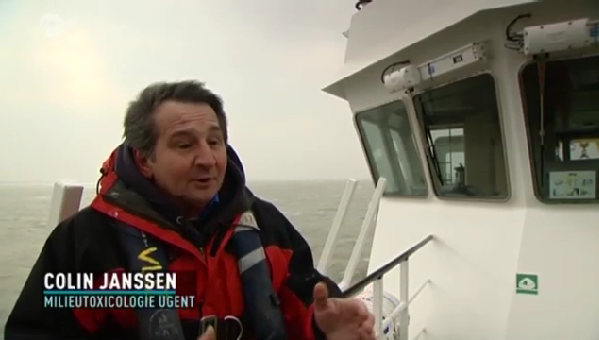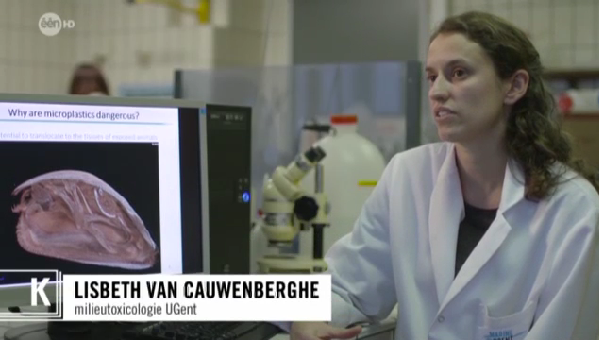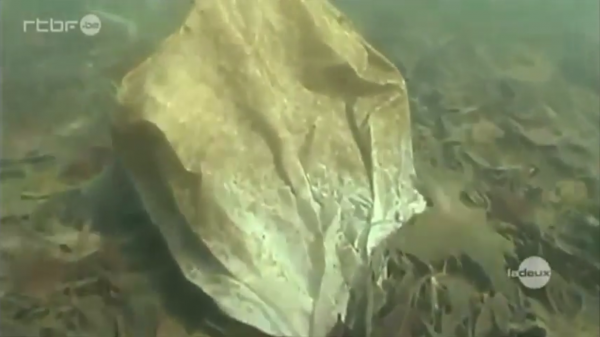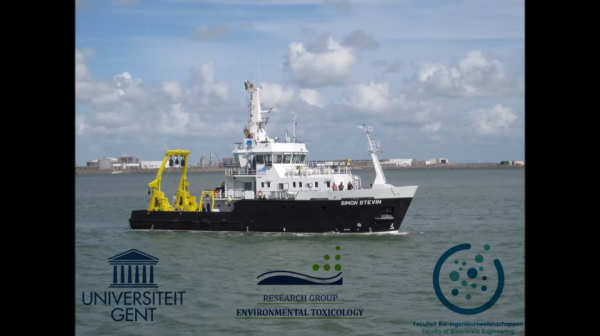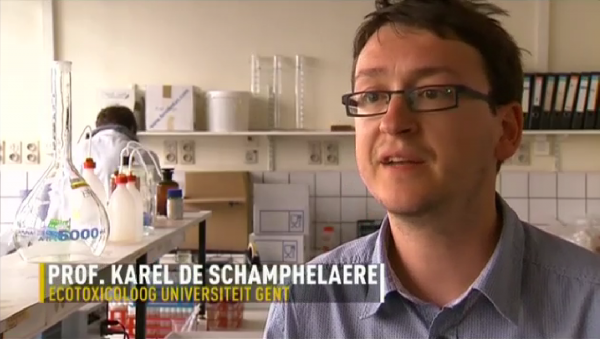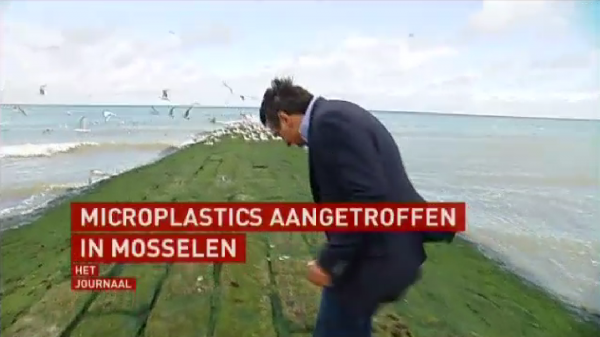The British television and radio platform Sky has made a documentary – A plastic tide – on plastic pollution in the oceans. Our laboratory has a great expertise in microplastic pollution in the marine environment and performed the first comprehensive risk assessment on these tiny plastic fragments. In this picture, journalists of SkyNews visited our lab and talked to Prof. Janssen and Niels De Troyer to get the full story concerning the human exposure and effects of microplastics in seafood. In addition, the newspaper the Telegraph wrote an article about (micro)plastic pollution and refers to the conversation skynews had with Prof. Janssen.
Media
Our microplastic research on SkyNews
Our research once more in the media
Our research on microplastic pollution has over the past years attracted considerable media attention. Recently there has been increased interest in this issue from politicians who urge the Flemish/Belgian governments to develop action plans to prevent plastic pollution in our seas and waterways. A few days ago, the mayors of the Belgium coastal towns started up a campaign to address beach pollution. The research which attracted media attention this time was the low efficiency (to retain microplastics) of waste water treatment plant(s) in Flanders and the contribution of the river Scheldt to the marine microplastic pollution issue.
Reporters of various national radio and TV stations and for the newspaper the Standaard (link) visited our lab and talked to Prof. Janssen to get the full story of recent research findings.
Student excursions on RV Simon Stevin
Master bioscience engineering students boarded the research vessel Simon Stevin to experience and learn about North Sea ecology and the application of different sampling techniques. During the excursion, which is part of the course Aquatic and terrestrial ecology, the Van Veen grab, the Niskin carousel, the CTD instrument, a plankton net and a beam trawl were used at several stations in the North Sea. We would like to thank the VLIZ and the RV Simon Stevin crew for this wonderful experience.
GhEnToxLab collaboration in video on EQS for metals
Eurometaux, the European non-ferrous metals association, and Arche Consulting produced a video on the Environmental Quality Standards (EQS) for metals. The EQS are essential to protect and sustain a good ecological and chemical quality of European surface waters. This deals within the objective of the water framework directive. Our lab collaborated in this production and a few lab members can be seen in the video.
Prof. Janssen explains the risk of neonics in the environment
Introduced in the 1990's, neonicotinoids (neonics for short) rapidly gained popularity as efficient insecticides and seed treatment products. These chemicals were specifically designed to slowly degrade in the environment while their water-solubility facilitates the uptake by crops, ensuring a long-lasting protection against their specific aggressors from within the plant. Twenty years later, the global phenomena of dwindling populations of honey bees and other pollinators is hampering our agricultural activities. Starting in 2008, evidence has been mounting that, despite their specificity claims, neonics are accumulating in the environment which is affecting non-targeted insect species. Now, a study by Dutch scientists, published in the prestigious journal Nature, has revealed that declining bird populations may also be linked to the occurrence of neonics. As a leading authority on environmental toxicology, professor Janssen was invited to comment on these findings by the news outlet of the Flemish Television Company.
GhEnToxLab member Lisbeth Van Cauwenberghe comments on loom bands in the environment
Looming, the seemingly innocent act of weaving colourful bands into bracelets and charms, is undoubtfully the summer hype of the year. After becoming the best selling toy of 2013 in the United States, it has now crossed the Atlantic and is rapidly spreading through (Western) Europe. As the rainbow loom bands are made from non-degradable, non-recyclable plastics and silicon, environmental organizations are growing concerned about their potential impact on the environment. Covering the news, the Flemish Television Company (VTM) asked our colleague Lisbeth Van Cauwenberghe to comment on the story.
Our microplastic research in the spotlight
Prof. Colin Janssen and Lisbeth Van Cauwenberghe spent a whole day with a VRT camera crew (Flemish television channel) on board the research vessel Simon Stevin to present our research concerning the occurrence and effects of (micro-)plastics in the North Sea. This topic was extensively covered on the national news channels and the TV program 'Koppen'.
The TV program 'Koppen' did a follow-up story on their previous coverage of our research concerning the occurrence and effects of (micro-)plastics in the North Sea. This time, we presented our findings on the occurrence of micro-plastics in commercially available shellfish.
Once more our research of (mircro-)plastics in the North Sea has been featured on a national TV channel. Prof. Colin Janssen explains the uptake of microscopic small plastic particles in the tissues of the mussel.
Marine research at GhEnToxLab
A lot of different research is going on at GhEnToxLab. We direct our research efforts to six main themes, which each focus on current important key problems in ecotoxicology and ecology, both in the marine and freshwater environment. This video will give you an overview of our research efforts concentrated around the marine environment.

